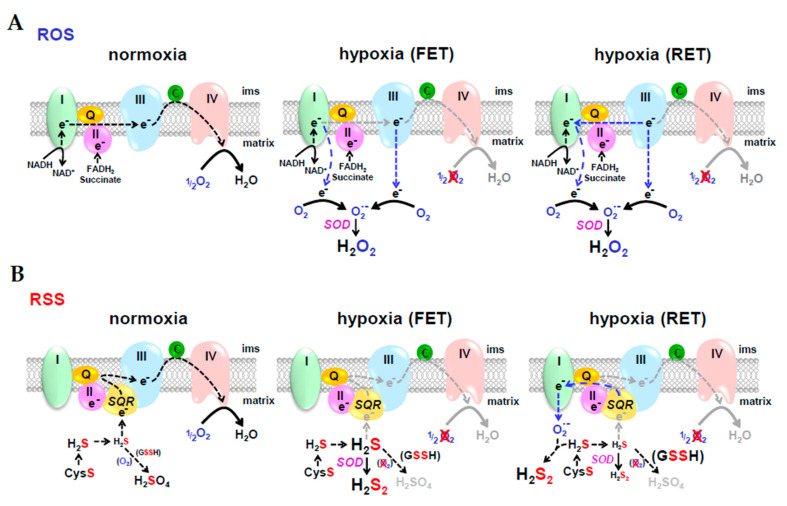Figure 6.
Reactive oxygen species (ROS) and reactive sulfur species (RSS) hypotheses for O2 sensing. In the ROS hypothesis (A), hypoxia decreases forward electron transport (FET) down the electron transport chain and electrons leak from complexes I and III; in reverse electron transport (RET), electrons are delivered retrograde from complex III to complex I. As electrons leak from the complexes, they reduce O2 to superoxide (O2•−). Dismutation of superoxide, either spontaneously, or catalyzed by superoxide dismutase (SOD), produces hydrogen peroxide (H2O2) which then diffuses out of the mitochondrion and oxidizes cysteine residues on the appropriate regulatory proteins. In the RSS hypothesis (B), hypoxia also decreases FET, but this decreases H2S oxidation by sulfide quinone oxidoreductase (SQR) thereby increasing mitochondrial H2S concentration. Excess H2S is oxidized by SOD, or by electrons from RET, to hydrogen persulfide H2S2 which diffuses out of the mitochondrion and persulfidates cysteine residues on the appropriate regulatory proteins.

